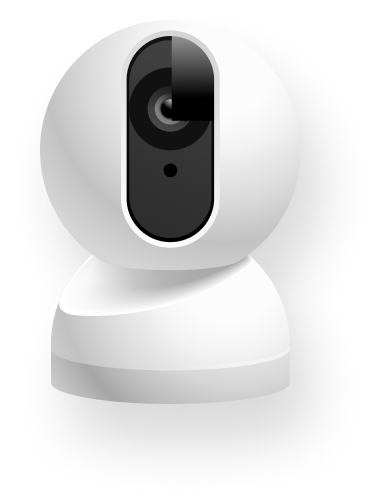Capturing number plates is an integral part of catching criminals or monitoring a business car park, but it is a little tricky to pull off.
In this article, we talk about the different types, what specifications are important for a number plate camera, and the settings required to capture a number plate clearly.
by Bryce Whitty
Bryce is a registered Security Advisor who started ProtectFind to help people get the right security system for their goals.
1
Types of Number Plate Cameras
The difference between license plate recognition and license plate capture is the ability of a computer to read the license plate and turn it into digital text.
Automatic Number Plate Recognition Camera
"Number Plate Camera" is a loose term.
When people think of "Number Plate Camera", they usually refer to Automatic Number Plate Recognition Cameras, or "ANPR".
An Automatic Number Plate Recognition Camera (sometimes known as ALPR camera) can read the number plate in the scene, turn it into digital text, and store it in a database.
This is often in the camera's software or done on the video recorder and is common on police patrol cars, highway agencies, paid parking sites, and toll roads.
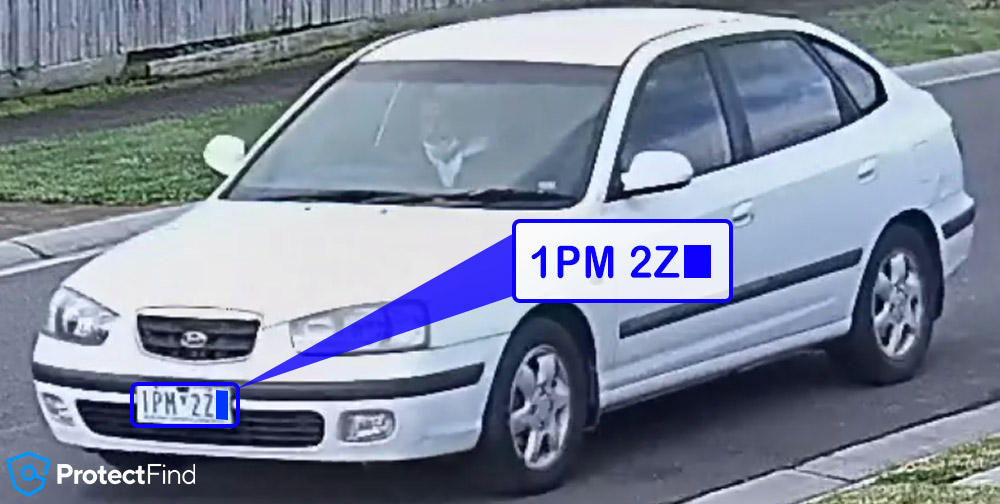
Number Plate Capture Camera
A Number Plate Capture Camera just has the proper specifications to see a licence plate and record the footage of the vehicle passing. Still, it cannot automatically "read" it. This is often done with just continuous recording to "rewind" the footage and find the right frame where you can see the license plate.
2
How to Capture Number Plates with Security Cameras
It is not about recommending a specific model; it is more about the security camera having the proper specifications.
Of course, a proper ANPR camera is specifically designed for this task, so it will already have the specifications you need.
The capture images of vehicle registration plates on a regular camera, a security camera needs:
- At least a 12mm lens - To read a plate across a typical Australian front lawn. Most consumer-grade cameras like Arlo, Eufy and Ring only have a 2.8mm lens. These will struggle to see a plate clearly unless the vehicles are within about 6 metres.
- The ability to change its shutter rate - Most consumer-grade cameras cannot change their shutter rate (Arlo, Eufy, Ring, Reolink etc..), but most prosumer cameras can, such as Dahua, Hikvision, and UNV.
A common mistake people make is they want to use a wide-angle camera to watch the street in general and read plates on cars.
The problem is, that the broader field of view you have, the less far you can see. You will want to have a security camera dedicated to capturing plates and another for a broad overview of the area.
Another common mistake is people get a 4K camera thinking it can read distant plates. The resolution is less important than having the correct lens. My plate camera is only 2MP, but it has a 62mm lens.
Selecting the Right Lens
Using a 89-degree, 3.6mm Lens:
In this example, I have a 4 Megapixel camera that has an 89-degree field of view and a 3.6mm Lens. The car is about 17 metres away.
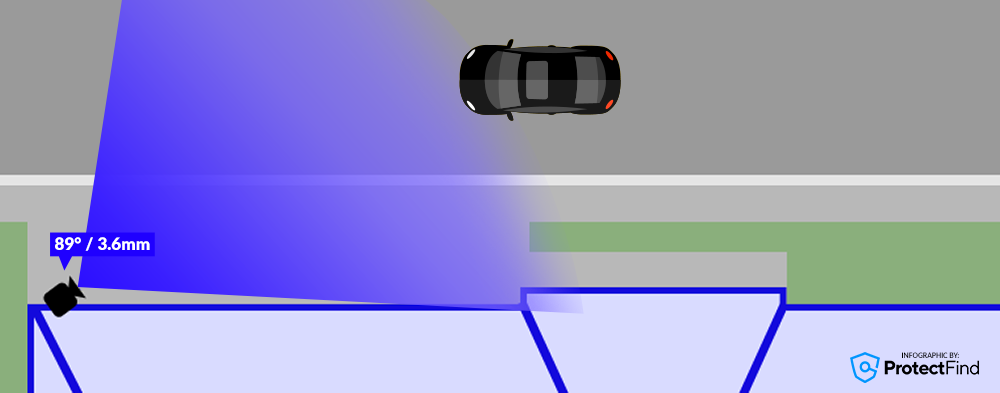
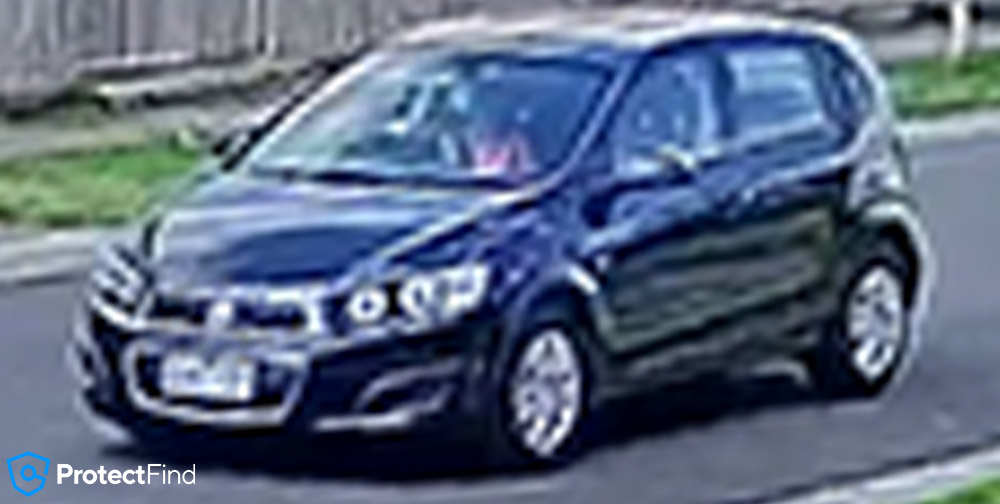
As you can see, there is simply not enough detail to read the plate. This is not a resolution problem, its a lens problem. The camera is seeing too wide and not putting enough pixels in one spot (on the car).
Using a 62-degree, 12mm Lens:
Now we will still use a 4 Megapixel camera, but the field of view is narrower at 62-degrees with a 12mm Lens.
So it doesn't see as wide, but it sees further, and closes the gap to read the plate. More pixels are pointed on the car so it is sharper.
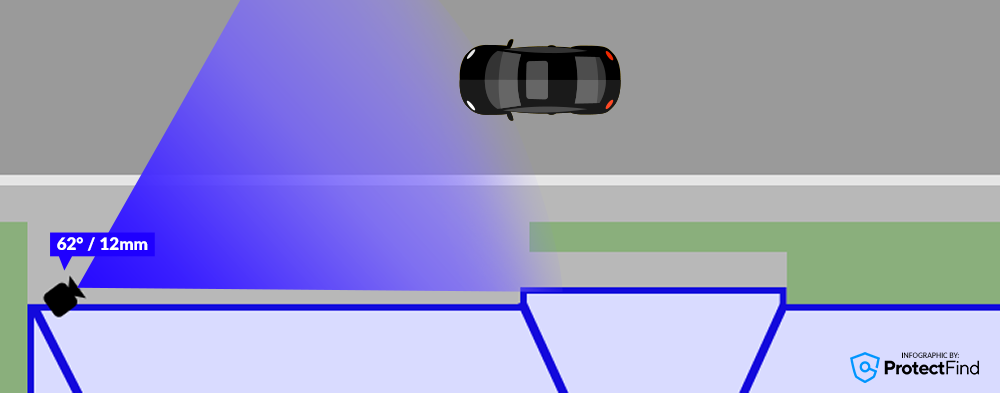
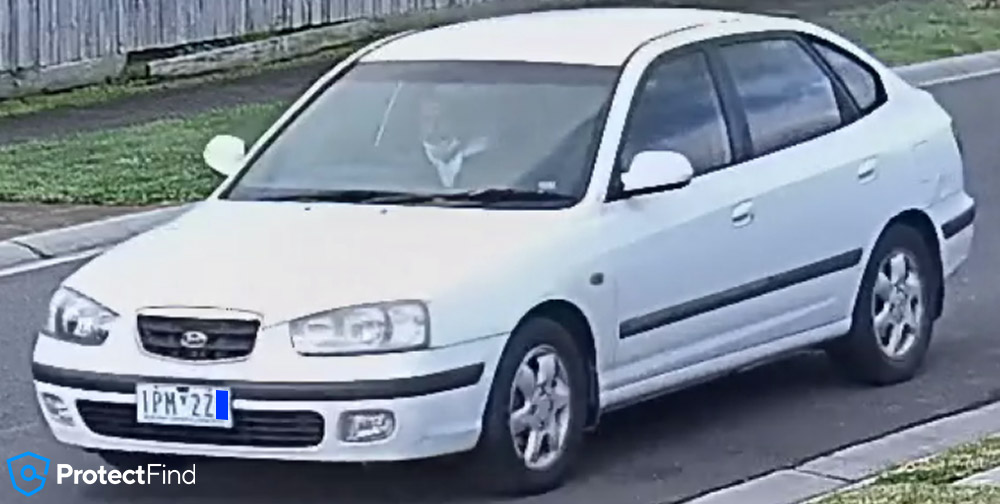
The number plate is readable now by human eyes as [1PM-2Z#] (I purposely edited out the last character for privacy).
However, a computer might have trouble with the "1" which could be an "I", and the 2 and the Z look similar too.
The angle here is a little bit too steep, and the steeper the angle, the more ambiguous the letters become.
Most proper number plate cameras that are designed for this task have better lenses, usually around the 50 to 60mm range and can capture plates around 50 metres away.
Using a 4-Degree, 60mm Lens:
In the example below, this camera has a 4-degree field of view with a massive 62mm lens. It is at a better angle, closer to the road, and mounted at number plate height. The car is about 40-50 metres away from the camera.
This is a 2 Megapixel camera, but the pixels are not spread over a wide area, they are all focused on the car allowing for more detail.

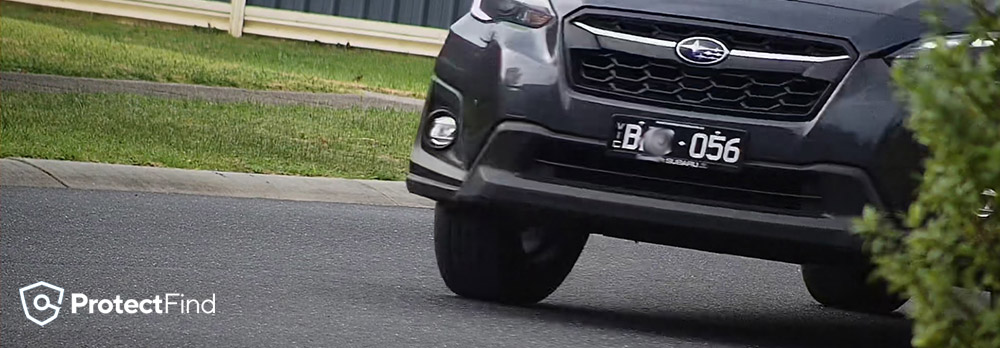
2.7mm versus 12mm Lens Example:
To explain what is happening a little better between lenses, here is a video from a 4MP varifocal camera that can change its field of view. It is going from 2.7mm (common in consumer cameras), to 12mm.
This way, you can see how the field of view plays such a large part in reading a distant plate.
The Right Angle
As mentioned before, the steeper the angle the harder the letters become to read. So you want to get as close to the road as possible.

If you are 90-degrees to a road like in the picture above, you could mount it to your fence or letterbox in a non-obvious place to get even closer to the road.
Some houses and businesses are well-positioned where they might be on a curve, T-intersection or some other situation where a car has to come almost directly at the camera.
It is important to get a good angle because many cars have features that obscure number plates if the angle is too steep:
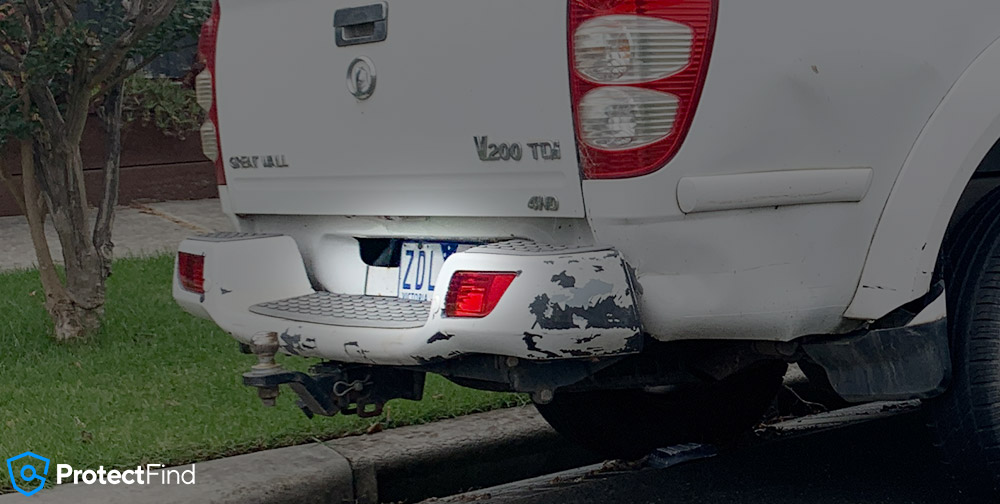
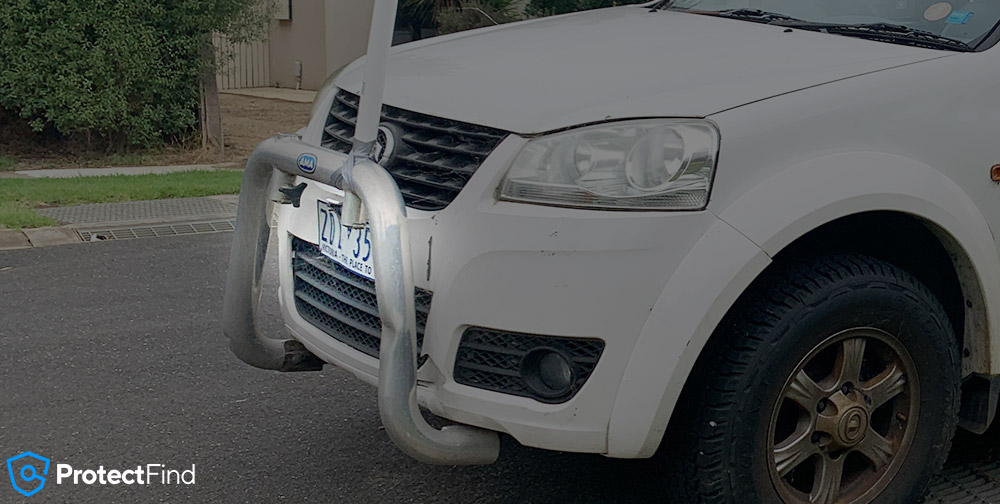
A Fast Shutter Speed
A fast shutter speed is extremely important to capture plates at night. Primarily to overcome the number plate "washout" that happens with most security cameras.
You can think of the cameras shutter as the "curtain" in front of the camera sensor, which stays closed until the camera takes a shot. When the camera fires, the shutter opens and exposes the camera sensor to light.
When the camera has finished capturing the amount of light you've chosen, it immediately snaps shut.
The Shutter Speed is the length of time this "curtain" remains open.
If you hold it open too long, which would be considered a slow shutter speed, moving objects will end up blurry.
Also, holding it open longer lets in too much light, which is why the number plate is washed out.
If you open and close it very quickly (a fast shutter speed), moving objects will be very sharp, almost as if it was a still photo. This is what we want for number plate capture.
Shutter speeds are measured in fractions of a second.
- 1/2 (the shutter is open for half a second) is considered slow
- 1/30 (one 30th of a second) is common on consumer-grade cameras.
- 1/250 is fast enough to make paused video look like still photos
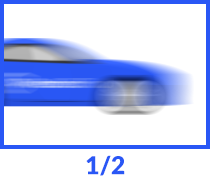
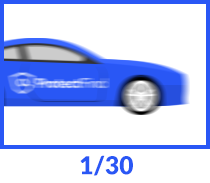
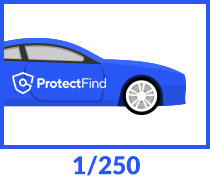
There is a trade-off though..
The faster a shutter speed, the less time it has to capture light, which means your pictures will be darker.
But we can use this to our advantage for capturing number plates at night.
Security cameras get overwhelmed at night by the headlights, taillights, and Infrared reflection from the license plates.
This is an example of what happens with most security cameras capturing number plates at night. It results in a white washed out rectangle and you can't see any of the numbers and letters.
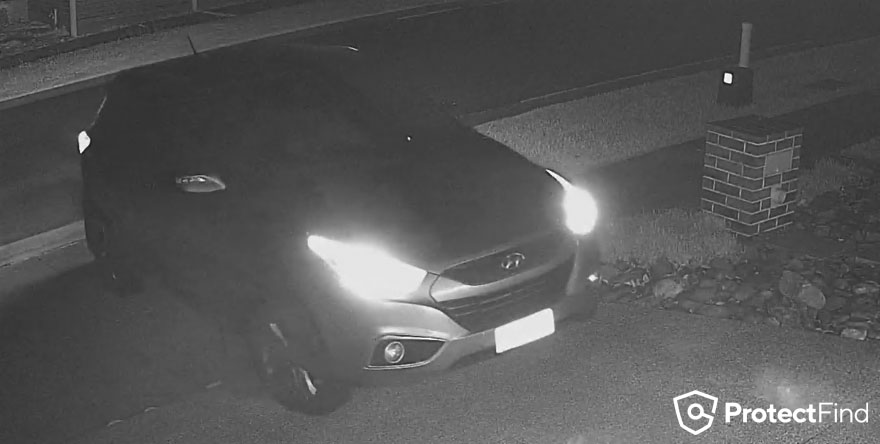
So we need to increase the shutter speed by a lot. Up to around 1/1000 or 1/4000.
By having a fast shutter, we take in less light and can see the plate better.

Most consumer-grade cameras have a shutter rate of around 1/20 or 1/30, and you cannot change it which makes them unsuitable for nighttime plate capture of moving vehicles.
To capture plates at night you will want a shutter rate of around 1/1000 to 1/4000. You can change the shutter rate on most Prosumer and Professional brands.
This is also why you will want a dedicated camera for this task, because at night it will be useless for anything other than capturing plates at night. Many people have a night time colour camera with a wide angle to capture the colour, make, and model of the car. And then have the plate camera just for reading number plates like in the picture above.
3
Can a 4K Camera Read Number Plates?
A 4K camera can capture more detail which allows you to read finer details at a greater distance. In some cases, this increase in detail is enough to "close the distance" to make a plate readable.
The benefit of a 4K camera versus a tighter lens is that it allows you to still see the full width of the scene (and not just the car), and see the number plate as well.
In the first part of this video, we zoom in on the license plate from 18 metres away, using a 4 Megapixels camera. It does not have enough quality to read the plate at this distance.
Then in the second part, we zoom in using an 8MP (4K) camera from the same distance.
The 4K camera captured more detail from the same distance of 18 metres. There are just more pixels to play with.
However, if the plate was further away, the 4K quality with a standard 2.8mm lens wouldn't have been enough to read it. This is generally why you would want to use a better lens for license plate capture.
Most proper automatic number plate cameras, such as Dahua's, make use of low resolutions like 2MP/1080p and big 50mm lenses.
4
Does a Higher Frame Rate Help with Capturing License Plates?
A higher security camera frame rate will give you more opportunities to get a good shot, especially with fast-moving vehicles. However, it is nowhere near as important as having a high shutter rate.
Think of having a higher frame rate as "taking more photos" per second, but the shutter rate determines how blurry the object in those photos is going to be.
If the vehicle is travelling directly towards or away from the camera, even 1 frame a second would be acceptable.
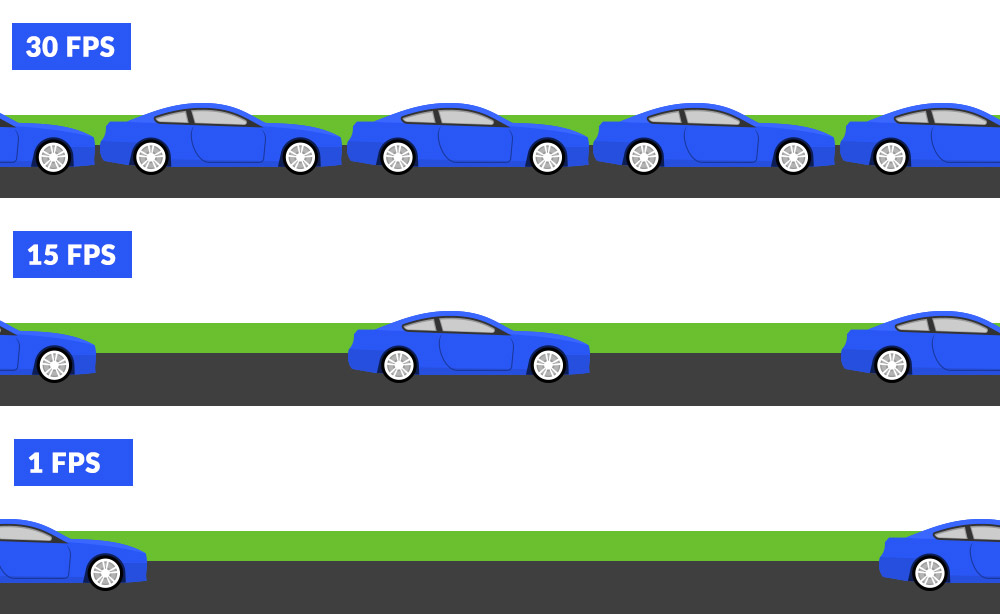
Camera Frame Rate (FPS) Example
5
Frequently Asked Questions
What is a LPR Camera?
LPR stands for Licence Plate Recognition, and these cameras are specifically designed to read a license plate, convert it into text, and store it in a database. From there, you can search for that license plate, see what times it came past etc..
Can a 1080p Camera Read License Plates?
Only if the car within 6 metres or so, which is often not enough distance to reach from where the camera is mounted to the road.
Can a Doorbell Camera See License Plates?
Generally no, doorbell cameras have a very wide field of view so they can see more of a person up close. It makes them only able to see short distances.
Can You Look Up Someone's Licence Plate in Australia?
You can only look up the registration details of the vehicle on the registration authorities website. For example, make, model, year, and whether the registration is current.
You cannot find out someone's name or address from their licence plate in Australia.
Can Security Cameras Read Number Plates at Night?
Yes, Prosumer cameras like Dahua, Hikvision and Uniview can if you set the shutter fast enough. Consumer grade cameras like Ring, Arlo, and Eufy don't allow you to change the shutter speed.
6
What’s Next?
Hopefully, this gives you a better idea of capturing number plates using a security camera. It is a little tricky and I would generally recommend getting a security installer to help you.
To learn more about security cameras, check out our Aussie specific Security Cameras Buyers Guide.
If you have any questions not covered in this article, you can get in touch here, and we’d be happy to answer them.
